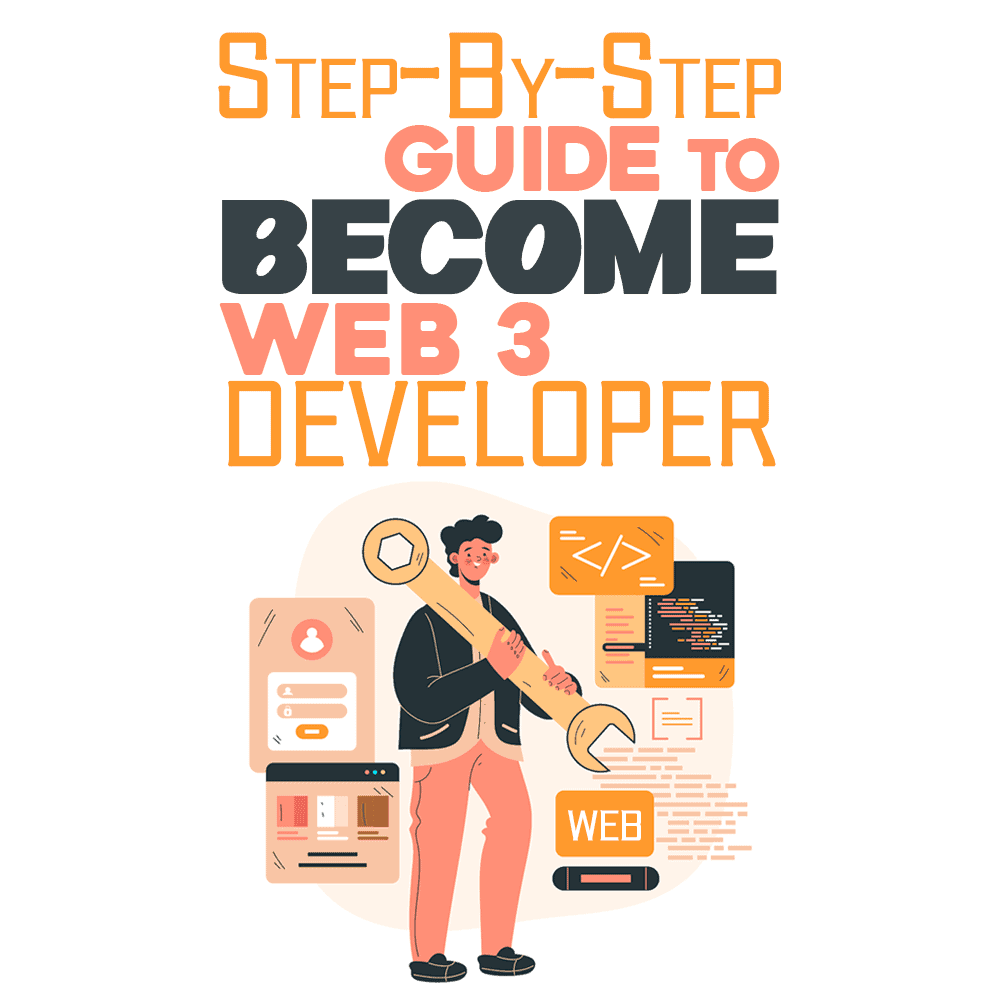 Web 3 has gained instant popularity as the successor of Web 2.0. Unlike its predecessors, Web 3 is all about data ownership by different stakeholders.
Web 3 has gained instant popularity as the successor of Web 2.0. Unlike its predecessors, Web 3 is all about data ownership by different stakeholders.
The ownership process works by people creating NFTs to parcel specific information about themselves and then giving access to like-minded third-party developers to use that information. In short, Web 3 is all about the development of a data economy.
The three fundamental pillars of Web 3 include artificial intelligence (AI) and machine learning (ML), blockchain, and edge computing. Sites using AI will be able to fetch information based on the user’s preferences making it easier to find what you are looking for.
The main aim behind Web 3 is to make internet searches faster, easier, and more efficient.
With the advent of Web 3, developers will be able to build applications that run on either blockchain or decentralized networks or a combination of two — an upgrade from Web 2.
Based on its unique characteristics, Web 3 presents countless opportunities for developers to expand their skill sets.
Learn Fundamentals of Blockchain Technology
As a developer striving to learn about Web 3, blockchain technology should be at the top of your list. Start off by learning what exactly blockchain is, how it works and how it might impact the way the current internet functions.
With the help of blockchain, Web 3 will be considered a decentralized space, where no user will have central data monitoring. Other than this, blockchain will make it harder to carry out fraudulent activities, making Web 3 a comparatively safer space.
Coming to the most basic question — what do blockchain developers do? A core blockchain developer mainly designs the security and architecture of the proposed blockchain system. In simple words, the developer works on the foundation others can work on.
Next come the blockchain software developers that build on what core blockchain developers have built.
Delving into the blockchain tech world can be quite challenging as developers need to come up with innovative solutions; design, debug and test software that can operate on multiple platforms.
Such a job requires you to think outside the box, have team-building skills, and be well aware of your limitations.
Now that you have a fair idea of what blockchain technology means for Web 3, where can you get started? There are various online resources available to help you get going with the different stages of blockchain development.
If you are feeling up to the challenge, you can learn by doing. In this case, you can build a blockchain application and discover the skills and knowledge required as you go along.
Practice Solidity for Smart Contracts
Before discussing why developers need to learn Solidity, let’s first briefly go over the concept of smart contracts. In a decentralized platform like Web 3, smart contracts have enabled users to trust automated code rather than a centralized institution.
In basic terms, smart contracts are a piece of code that perform a series of steps as programmed. Since smart contracts are on the rise, so is the demand for smart contract developers.
Enter Solidity– an object-oriented programming language similar to JavaScript particularly focused on smart contract development. A tad different from JavaScript, Solidity is an inertly typed language featuring only dynamic return types with some aspects of Python and C++.
Given all this, Solidity is a highly efficient programming language with promises of consistent improvement and a wide range of applications.
Learning a new language can be overwhelming, so it’s important to not give up and stick to the whole process. To learn Solidity, start off by building a foundation about blockchain, bitcoin, and Ethereum.
Another fun way to learn Solidity is to try your luck at Crypto Education Games. Such games involve steps that require developers to put Solidity design concepts into practice.
Understand Metamask
Wallets on Web 3 serve as the identity of the user and also hold different types of cryptocurrencies.
To perform an operation on the blockchain, users need to verify the transaction by paying a fee to the network. All payments are facilitated by using a wallet.
One of the most popular types of cryptocurrency wallets is the Metamask. In addition to being a crypto wallet, Metamask also acts as a gateway to the extensive Ethereum network.
For users, Metamask acts as a wallet that enables them to store and send any Ethereum-compatible tokens. While for developers Metamask allows you to run and design Ethereum apps right in your browser without running the complete Ethereum node. There are great resources for learning to build a Decentralized App (dapps) using Metamask.
Learning to use Metamask may seem difficult at first, but it is one of the simplest Ethereum wallets and dapps browsers to use. Start off by downloading the official Metamask browser like Firefox or Google Chrome, follow the guideline for installing Metamask and you are good to go.
Develop a Decentralized App
Decentralization is one of the main elements of Web 3 and will aid in the establishment of a secure and transparent environment for users. For this purpose, it becomes essential for developers to learn how to make a decentralized app.
Before we go into the details, let’s quickly review the difference between daaps (or dApps) and apps.
Traditional apps rely on servers to sync data whereas decentralized apps run on a peer-to-peer server with no central server called blockchains. Other than this, you really can’t tell the difference from the interface.
To give you a brief intro of dapps, they are mostly transnational apps and require a smart contract and front end to function. To create a dapp, the first thing you need to do is build a smart contract.
The structure of the smart contract depends on the nature of your app. Whether it’s going to support simple transactions or complex algorithms– all of this will be reflected in your smart contract.
After working on a front and back end, you will be ready to test your app. While the QA process of the app itself is pretty standard, smart contract testing follows a unique testnet to verify its functionality. Once this is done, you are ready to deploy your app.
Developing a dapp is certainly hard work and it doesn’t go without paying. If your app gets a solid response you can even monetize the app to support yourself.
Join Support Communities

The best constructive getaway is online support communities that range over multiple platforms.
Such communities are based on different aspects of programming and involve developers from all over the world. Being a part of such a group helps you interact with mentors and learn from them.
As Web 3 is a relatively new phenomenon, joining the relevant online communities can really help you get up to the mark with the latest developments. Ranging from conferences to social meet-ups, developer communities provide a space to share your passion and knowledge with others with similar interests.
Some popular web 3 support communities include:
Build a Portfolio
Whenever you learn a new skill or explore a new market to land a job, remember to build your portfolio side by side. Having a solid portfolio not only acts as a baseline for future career investments but also enables you to apply for relevant jobs.
Web 3 is a vast platform and offers numerous opportunities for developers. Take this as your cue to specialize in the areas that interest you and will help you grow the most.
The key to a good portfolio is to have something you are passionate and confident about. Include the best projects you have worked on and are proud to showcase. As an example you can list projects focused on the following:
- Smart Contracts
- Crypto social network
- Solidity code optimizations
- Crypto exchange
- NFT marketplace
- Dapps
If this list seems much more than you can handle, worry not! Start with a single project and keep it simple. Learning a new skill can be challenging but keep yourself motivated and your portfolio will speak for itself.
The Future is Web 3
Web 3 centered around decentralization and blockchain technology is the future of the internet. The new web presents countless possibilities which open up multiple learning opportunities for developers.
To keep up with the market demand programmers need to learn the latest web 3 technologies.
The adoption of web 3 will require extensive knowledge of blockchain technology and decentralized applications. If you are inclined towards such technologies, then get yourself enrolled in a web3 starter course without any delay.
The sooner you start, the higher your chances are of building a killer portfolio with impressive projects.
